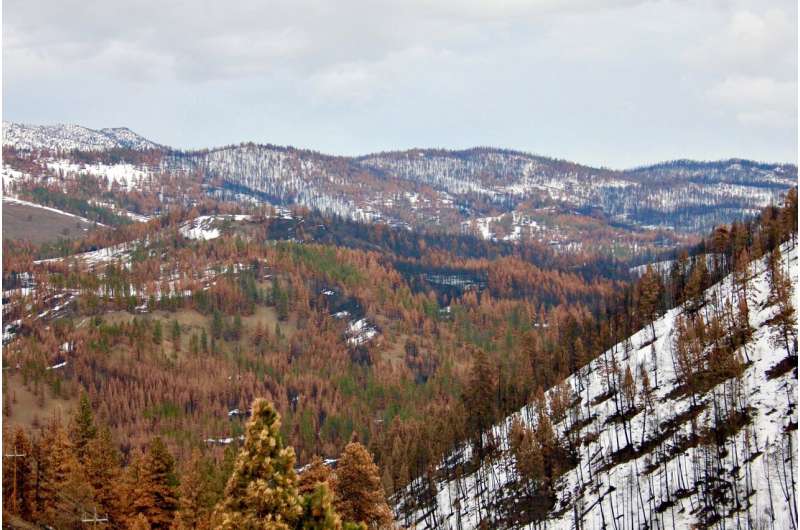Study: Wildfires in Oregon's blue mountains to become more frequent, severe due to climate change

Under a warming climate, wildfires in Oregon's southern Blue Mountains will become more frequent, more extensive and more severe, according to a new Portland State University-led study.
Researchers from PSU, North Carolina State University, University of New Mexico and the U.S. Forest Service looked at how climate-driven changes in forest dynamics and wildfire activity will affect the landscape through the year 2100. They used a forest landscape model, LANDIS-II, to simulate forest and fire dynamics under current management practices and two projected climate scenarios.
Among the study's findings:
- Even if the climate stopped warming now, high-elevation species such as whitebark pine, Engelmann spruce and sub-alpine fir will be largely replaced by more climate- and fire-resilient species like ponderosa pine and Douglas fir by the end of the century.
- A growing population of shade-loving grand fir that has been expanding in the understory of the forest was also projected to increase, even under hotter and drier future climate conditions, which provided fuels that helped spread wildfires and made fires even more severe.
Brooke Cassell, the study's lead author and a recent Ph.D. graduate from PSU's Earth, Environment and Society program, said that if these forests become increasingly dominated by only a few conifer species, the landscape may become less resilient to disturbances, such as wildfire, insects and diseases, and would provide less variety of habitat for plants and animals.
Cassell said that the team's findings suggest that forest managers should consider projected climate changes and increasing wildfire size, frequency and severity on future forest composition when planning long-term forest management strategies.
The team also suggests that in light of the projected expansion of grand fir, managers should continue to reduce fuel continuity through accelerated rates of thinning and prescribed burning to help reduce the extent and severity of future fires.
The study's findings were published in the journal Ecosphere.
More information: Brooke A. Cassell et al, Widespread severe wildfires under climate change lead to increased forest homogeneity in dry mixed‐conifer forests, Ecosphere (2019). DOI: 10.1002/ecs2.2934
Journal information: Ecosphere
Provided by Portland State University



















